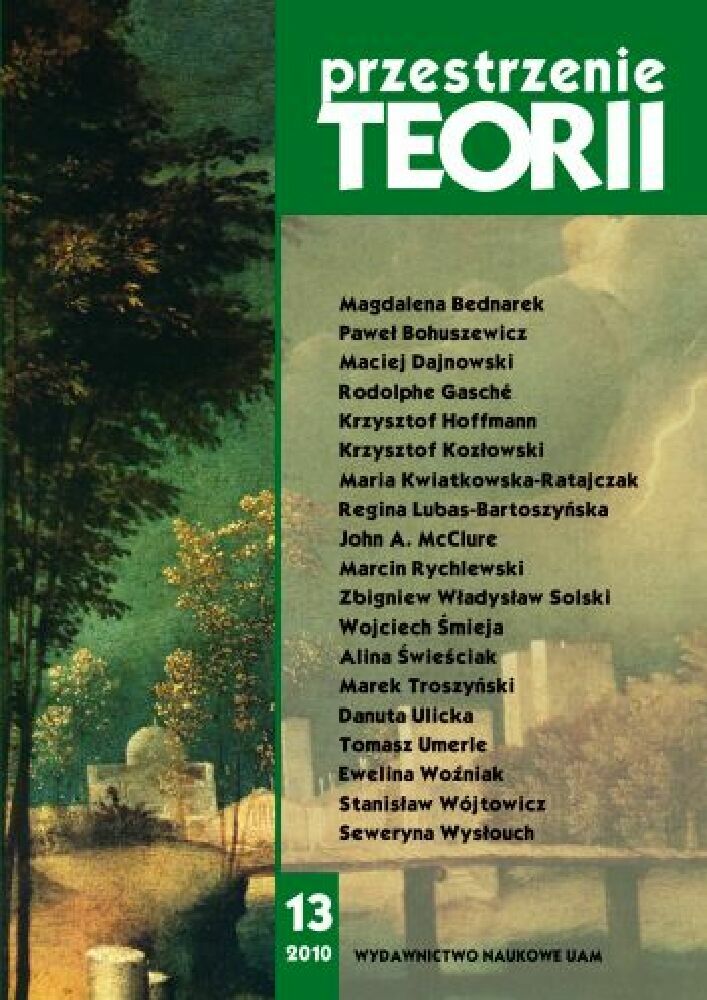Abstrakt
Kozłowski Krzysztof, Dahlhaus – Kunze: dwugłos o dramacie muzycznym Richarda Wagnera [Dalhaus – Kunze: a dialogue on Richard Wagner’s musical drama]. „Przestrzenie Teorii” 13. Poznań 2010, Adam Mickiewicz University Press, pp. 117-131. ISBN 978-83-232- 2176-0. ISSN 1644-6763. This article supports the thesis that Carl Dalhaus’s interpretation of the Wagnerian musical drama (drama is here understood as a “dramatic-musical form” existing in the score, which fully comes into being only on stage as a concrete artistic creation) is not totally in opposition to Stefan Kunze’s interpretation, according to whom the Wagnerian drama, as the whole musical theatre of Wagner, is in fact the “imaginative theatre”. It is possible to defend this thesis thanks to my conviction that “imaginativeness” of the theatre and its reality (staging) are not mutually exclusive although they create a particular tension. This article consists of two parts. The first one presents Carl Dalhaus’s interpretation according to which the staging belongs to the history of a particular work of drama, forming its unique character every time again. The other part of the text discusses Stefan Kunze’s interpretation that the imaginary theatre is a part of the dramatic-musical form. There is a punch line, or a specific coda, at the end of the second part of the article, which explains the meaning of both, Dalhaus’s and Kunze’s points of view, seen also from the perspective of Wagner’s musical drama itself. My interpretation presented in this article is – referring to the current state of research and in spite of a large number of literature on this subject – new and original although the meaning of both theories is of great importance for the Wagnerian studies. My interpretation may serve to better understand both – the paradox of Wagnerian studies and the artistic work to which these theories refer.Bibliografia
A. Lorenz, Das Geheimnis der Form bei Richard Wagner, t. 1–4, Tutzing 1962.
C. Dahlhaus, Wagners Konzeption des musikalischen Dramas, München i in. 19902, s. 105-106.
C. Dahlhaus, Die Musik, [w:] Richard-Wagner-Handbuch, hrsg. von U. Müller, P. Wapnewski, Stuttgart 1986, s. 205, 206.
C. Dahlhaus (Wagners Begriff der „dichterisch-musikalischen Periode”, [w:] Beiträge zur Geschichte der Musikanschauungen im 19. Jahrhundert, hrsg. von W. Salmen, Regensburg 1965, s. 96-97, 179-187, 191.
C. Dahlhaus, Richard Wagners Musikdramen, Stuttgart 19963, s. 207,226.
R. Wagner, Die deutsche Oper, [w:] Sämtliche Schriften und Dichtungen [Volks-Ausgabe], t. 12, Leipzig 1911–1914, s. 4.
D. Ratajczakowa, Teatr jako interpretator dzieła literackiego, [w:] Problemy teorii dramatu i teatru, wybór i oprac. J. Degler, Wrocław 1988, s. 418.
W. Breng (Wagners kompositorisches Werk, [w:] Richard-Wagner-Handbuch, dz. cyt., s. 414-416.
S. Kunze, Der Kunstbegriff Richard Wagners. Voraussetzungen und Folgerungen, Regensburg 1983, s. 47-55 „100 Jahre Bayreuther Festspiele”, t. 1.
K. Kozłowski, Teatr i religia sztuki. „Parsifal” Richarda Wagnera, Poznań
, s. 19-82.
S. Kunze, Richard Wagners imaginäre Szene, [w:] Dramatisches Werk und Theaterwirklichkeit, hrsg. von H.J. Lüthi, Bern 1983, s. 35-44, 36 („Berner Universitätsschriften”, t. 28).
S. Kunze, Über den Kunstcharakter des Wagnerschen Musikdramas, [w:] Richard Wagner. Von der Oper zum Musikdrama. Fünf Vorträge, hrsg. von S. Kunze, Bern–München 1978, s. 19-20, 21-22.
Clive Staples Lewis, Zaskoczony radością. Moje wczesne lata, przeł. M. Sobolewska, Warszawa 1999, s. 77
C. Dahlhaus, Idea muzyki absolutnej i inne studia, przeł. A. Buchner, Kraków, 1988, s. 15.
Th.G. Georgiades, Musik und Sprache. Das Werden der abendländischen Musik dargestellt an der Vertonung der Messe, Berlin–Heidelberg–New York 19742, s. 70-71.
Konstytucja nowej muzyki, przeł. A. Buchner, „Res Facta” 1972, s. 192.
S. Kunze (Abenteuer der Autonomie in der europäischen Musik, [w:] De Musica. Ausgewälte Aufsätze und Vorträge, hrsg. von R. Bockholdt, Tutzing 1998, s. 595, 556.
C. Dahlhaus (Wagnera pojęcie formy dramatyczno-muzycznej, przeł. J.S. Buras, „Scena Operowa” 1987/88, nr 3, s. 20.
C. Dahlhaus, Wagners dramatisch-musikalischer Formbegriff,
[w:] Vom Musikdrama zur Literaturoper, München–Salzburg 19892, s. 72-73.
Th.W. Adorno, Filozofia nowej muzyki, przeł. F. Wayda, słowem wstępnym opatrzył S. Jarociński, Warszawa 1974, s. 73.
Licencja
Autorzy
Autorzy tekstów przyjętych do publikacji w czasopiśmie „Przestrzeniach Teorii” są zobowiązani do wypełnienia, podpisania i odesłania na adres redakcji umowy o udzielenie nieodpłatnej licencji do utworów, z zobowiązaniem do udzielania sublicencji CC.
Zgodnie z umową, autorzy tekstów opublikowanych w czasopiśmie „Przestrzeniach Teorii” udzielają Uniwersytetowi im. Adama Mickiewicza w Poznaniu niewyłącznej i nieodpłatnej licencji oraz zezwalą na użycie sublicencji Creative Commons Attribution-NonCommercial-NoDerivatives 4.0 International (CC BY-NC-ND 4.0).
Autorzy zachowują prawa do dalszego, swobodnego rozporządzania utworem.
Autorzy, którzy wykorzystują w swoim tekście cudze utwory (np. ilustracje, fotografie) proszeni są o dostarczenie do redakcji czasopisma zgodę na publikację od uprawnionych podmiotów.
Użytkownicy
Zainteresowani użytkownicy internetu uprawnieni są do korzystania z utworów opublikowanych po 2015 roku „Przestrzeniach Teorii” tylko w calach niekomercyjnych, pod następującymi warunkami:
- uznanie autorstwa - obowiązek podania wraz z rozpowszechnionym utworem, informacji, o autorstwie, tytule, źródle (odnośniki do oryginalnego utworu, DOI) oraz samej licencji;
- bez tworzenia utworów zależnych - utwór musi być zachowany w oryginalnej postaci, nie można bez zgody twórcy rozpowszechniać np. tłumaczeń, opracowań.
Do wszystkich tekstów opublikowanych przed 2015 r. prawa autorskie są zastrzeżone.
Inne
Uniwersytet im. Adama Mickiewicza w Poznaniu zachowuje prawo do czasopisma jako całości (układ, forma graficzna, tytuł, projekt okładki, logo itp.).
